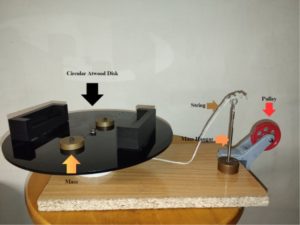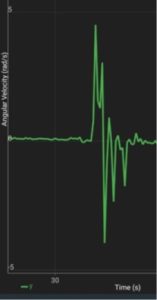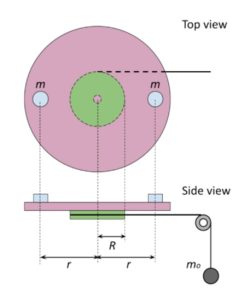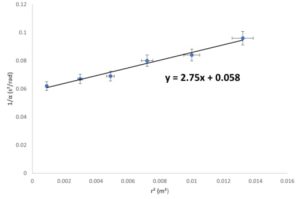| Researchers | Muhammad Salman Hassan |
| Time Frame | Summer 2024 |
| Supplementary Materials | Spinner with a smartphone |
| Description | |
This innovative study presents an experimental examination of the Circular Atwood Machine using a home-built setup integrated with smartphone technology. The research bridges classical physics principles with contemporary measurement techniques to validate fundamental relationships in rotational dynamics. The study was conducted by Muhammad Salman Hassan, who is an A-level student at Aitchison College. He worked in Physlab in the summer of 2024 as a RISE scholar.
The experimental setup consisted of a rotating disc with adjustable masses and a hanging weight system. Using the Phyphox app on our smartphone that uses gyroscope sensors, we captured real-time measurements of the system’s rotational behaviour, transforming a traditional physics experiment into a modern digital investigation.
(a)
(b) Figure 1. (a) Setup of the circular Atwood machine, and (b) reading of gyroscope sensor. The primary focus was validating the inverse relationship between angular acceleration (α) and the square of the distance from the center to the masses (r²). The results demonstrated a clear linear trend with a slope of 2.75 and an intercept of 0.058, confirming the theoretical predictions. By varying the radius from 30mm to 115mm, we measured angular accelerations ranging from 16.07 rad/s² to 10.40 rad/s².
(a)
(b) Figure 2. (a) Scheme of the circular Atwood machine, and (b) Graph of 1/α and r². This investigation shows how modern technology can transform traditional physics experiments into precise scientific investigations. The success of this home-built setup in validating theoretical relationships suggests that similar approaches could be valuable for both research and educational purposes in physics laboratories. | |



